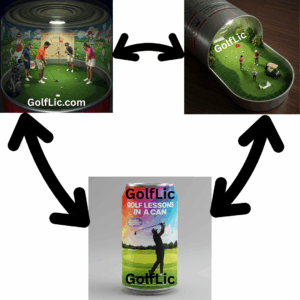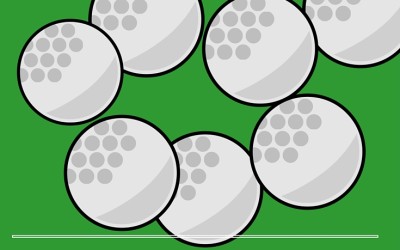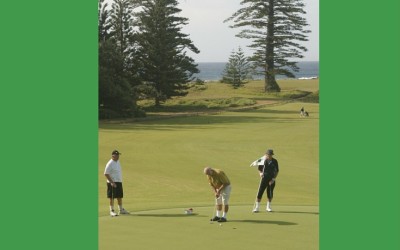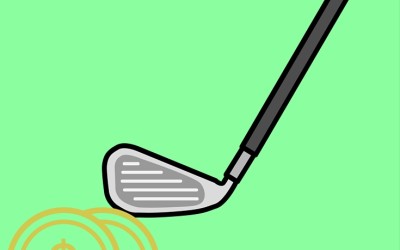Welcome to GolfLic.com, Golf Lessons In A Can.
We took real bits of golf lesson and canned them in a golfer safe formula that is fun, safe, and effective to use.

GolfLic Golf Lessons In a Can
Tired of endless, pointless chatter from social golf influencers? Want to improve your golf game without confusing jargon and endless talk? Does watching more golf videos actually make your swing worse? GolfLic’s canned golf lessons are sure to quench your thirst for golf knowledge. Crack open a GolfLic, and improve your game with GolfLic, Golf Lessons in a Can.
Birdie putt white 3 Dandridge
Birdie putt white 4 Dandridge
Birdie putt white 7 Dandridge
Birdie putt Red 6 Dandridge
Birdie putt Red 7 Dandridge golf
Birdie putt blue 8 Dandridge
Birdie putt blue 6 Dandridge
Birdie putt blue 2 Dandridge
Birdie putt Blue 1 Dandridge
Focus Based Golf Lesson with F Machine Golf
Why Does This Birdie Putt Miss?
Birdie putt blue 4 Dandridge Golf
Birdie putt blue 6 Dandridge Golf
Birdie putt Blue 8 Dandridge Golf
Blue 3 Dandridge Golf birdie putt
Red 9 Dandridge Golf albatross shot
Blue 9 Dandridge Golf Tee shot
Eagle Shot 136 yards Blue 4 Dandridge Golf
Blue 3 Dandridge golf eagle chip
Blue 2 Dandridge golf Eagle chip
White 5 Albatross shot Dandridge Golf.
Birdie putt Red 9 Dandridge Golf
Birdie Putt Blue 7 Dandridge golf
Birdie Putt Blue 5 Dandridge Golf
Birdie putt Blue 1 Dandridge Golf
Birdie Putt White 6 Dandridge Golf
Birdie putt White 5 Dandridge Golf
Birdie putt White 4 Dandridge Golf
Birdie putt White 3 Dandridge Golf
Dandridge Golf Red Blue course birdie
Red course Dandridge golf
Golf 6 iron, Driver, 56 degree wedge
Blue Course Dandridge Golf
Birdie putt white 5 Dandridge Golf
Dandridge Golf Course birdie putt
Par 5, 2nd shot, 168 yards, Blue
Birdie putts Dandridge Golf Course
Vokey Wedge 56 8 bounce m grind
100 chip shots 25 yards to square
Core Golf 25 ball small bucket work
100 Golf Ball Bucket Time Lapse
Golf Dandridge Country Club Red#2
25 Ball Bucket on Time Lapse 2 angle
Optishot 2. Play 3 holes of golf
Hitting Golf Balls with a golf club
Dandridge Red Course walking 9
25 Balls at Core Golf Dandridge
Golf Dandridge golf and country club
Chipping Pitching practice 100 ball
Hitting Drives on #14 Druid Hills
Core Golf Dandridge 25 ball bucket
Golf round Dandridge Blue and Red
25 ball bucket practice Driver, 3 wood
Sevierville Highlands Golf
Druid Hills #14 Par 5 Signature hole
This was the 3rd 100 ball bucket
Golf Swing at Ruggles Ferry
Dandridge Golf on Red and Blue
Sevierville Golf Course Highlands
Core Golf Dandridge Drive Golf ball over Mountain
Las Vegas Golf Trip
100 Golf Balls Time Lapse
Birdie putt white 7 Dandridge golf
100 ball bucket time lapse 2nd of day
Lesson 5. Move ball back in stance
Red 9 Dandridge Golf. par 5 in 2
Birdie putt White 5 Dandridge Golf
Birdie putt White 7 Dandridge Golf
Lesson 3 noodle behind, swing right
Birdie Putt Red 9 Dandridge Golf
Golf lesson, swing right, close grip
Golf lesson 4. Right leg stationary
2nd shot Par 5 Blue 7 Dandridge golf
Classic 60 yard eagle putt
Most Used Brand of Golf Clubs at the Masters
The Most Played Golf Club Brands at the Masters
The Masters Tournament, held annually at the prestigious Augusta National Golf Club, is not only a showcase of the world’s best golfers but also a fascinating look at the equipment they trust. While official, comprehensive data on club usage at the 2025 Masters isn’t fully compiled yet, we can analyze available information and trends to identify the most popular golf club brands among the field.
Early Insights and Top Contenders:
Based on reports and observations from the Masters, Titleist appears to have maintained its strong presence as the most played brand across multiple club categories.
- Drivers: Titleist drivers were reportedly used by the highest number of players in the field. Models like the Titleist GT2, GT3, and TSR2 were prominent choices. This continues a multi-year trend of Titleist drivers being favored at Augusta.
- Irons: Titleist irons also saw significant usage, with models like the T100 being a popular selection among both tour veterans and amateurs in the field.
- Wedges: Vokey Design wedges, a Titleist brand, continue their dominance as the most played wedges at the Masters. Their reputation for versatility and spin control around Augusta’s challenging greens makes them a trusted choice.
- Putters: Scotty Cameron putters, another brand under the Titleist umbrella, were also highly prevalent on the greens of Augusta National. Various blade and mallet designs were used, reflecting individual player preferences.
Other Notable Brands:
While Titleist seems to lead in overall usage, other major brands also had a strong presence at the 2025 Masters:
- Ping: Ping drivers, particularly the G430 LST and G440 LST models, were used by a significant number of players. Ping’s reputation for forgiveness and stability off the tee makes them a popular choice.
- TaylorMade: TaylorMade drivers, including the newer Qi10 and Qi35 models, were also visible in the bags of several top players, including Rory McIlroy and Scottie Scheffler. TaylorMade’s irons and wedges also had representation.
- Callaway: Callaway’s latest offerings, such as the Paradym Ai Smoke drivers and various iron models, were used by a number of competitors. Their wedges also remain a popular option for many.
- Srixon: Srixon drivers and irons, particularly models used by players like Hideki Matsuyama, were also in play.
- Cobra: Cobra clubs, including drivers and irons, were used by a few players in the field.
Factors Influencing Club Choice at the Masters:
The unique demands of Augusta National often influence players’ equipment choices:
- Driving Accuracy and Distance Control: The tight fairways and strategic bunkering place a premium on accurate driving and the ability to control distance.
- Approach Play Precision: Hitting greens in regulation on Augusta’s undulating surfaces requires precise iron play and the ability to control spin and trajectory.
- Short Game Versatility: The diverse lies around the greens and the need for delicate chip shots and high, soft landings make versatile wedges crucial.
- Putting Feel and Speed Control: The fast and contoured greens of Augusta demand exceptional putting feel and precise speed control.
Conclusion:
While a definitive count of club usage at the Masters is still emerging, early reports indicate that Titleist was likely the most played brand across key equipment categories. Ping, TaylorMade, and Callaway also had significant representation, reflecting the trust and performance these brands offer to the world’s best golfers in the challenging environment of Augusta National. The specific models used often highlight the players’ focus on accuracy, distance control, and short game versatility, all critical for success at this iconic tournament.
Most Used Golf Ball at the Masters
The Most Used Golf Ball Brands at the Masters
While specific data from the Masters is not always available, we can analyze trends from the broader PGA Tour season and recent major tournaments to provide an insightful overview of the most popular golf ball brands among the pros.
General Trends for Golf Balls
-
Titleist Dominance: Titleist has consistently been the most popular golf ball brand on the PGA Tour. Throughout the golf season, a significant majority of players, often around 70%, have teed off using either the Titleist Pro V1 or the Titleist Pro V1x.
- The Pro V1 is favored for its balanced performance, offering a soft feel, consistent flight, and a blend of distance and spin control. Players like Scottie Scheffler have relied on its consistency.
- The Pro V1x tends to have a firmer feel, higher flight, and more spin, making it a preferred choice for players seeking maximum stopping power and height, such as Ludvig Åberg and Wyndham Clark.
-
TaylorMade as a Strong Contender: TaylorMade golf balls, particularly the TP5 and TP5x models, hold a strong presence on the tour.
- The TP5 is known for its soft feel and high spin around the greens while still providing competitive distance off the tee. Rory McIlroy has made this his ball of choice.
- The TP5x offers a firmer feel, higher launch, and is often favored in windy conditions due to its penetrating flight.
-
Callaway Gaining Popularity: Callaway’s Chrome Tour and Chrome Tour X golf balls have been increasingly adopted by tour professionals.
- The Chrome Tour aims for a balance of soft feel and distance, appealing to players like Xander Schauffele.
- The Chrome Tour X is engineered for more distance and lower spin on longer shots, preferred by players such as Min Woo Lee.
-
Srixon and Bridgestone: These brands also have representation on the PGA Tour, with models like the Srixon Z-Star XV (used by Hideki Matsuyama) and Bridgestone’s Tour B series finding their way into the bags of some top players.
What This Means for the [Tournament Name]:
Based on these overarching trends, it’s highly probable that Titleist golf balls were the most used at the 2024 [Tournament Name]. You would likely see a significant number of players opting for the Pro V1 and Pro V1x. Following Titleist, TaylorMade and Callaway would likely be the next most popular choices, with a smaller but still notable number of players using Srixon and Bridgestone balls.
Why These Brands Dominate:
- Performance: These brands invest heavily in research and development to create golf balls that offer optimal performance characteristics for the highly skilled players on tour, including distance, spin control, feel, and stability in various conditions.
- Consistency: Tour professionals demand consistency in their equipment. These leading brands are known for producing golf balls with tight manufacturing tolerances, ensuring predictable performance from one ball to the next.
- Trust and Reputation: These brands have built a long-standing reputation for quality and performance on the highest level of competitive golf. Players trust these brands to deliver when it matters most.
- Player Endorsements: While correlation doesn’t equal causation, the fact that many top players choose to play these brands further reinforces their popularity and desirability among other professionals.
In Conclusion:
While we await the official statistics for the Masters, the trends throughout the PGA Tour season strongly suggest that Titleist was the most used golf ball brand. TaylorMade and Callaway would likely follow as strong contenders, with Srixon and Bridgestone also having a presence in the field. The performance, consistency, and reputation of these brands make them the top choices for the world’s best golfers.
Golf Course Nutrition
Fueling Your Swing: Nutrition Tips for Golfers
Golf is a sport that demands focus, precision, and endurance. While technique and practice are crucial, proper nutrition plays a vital role in optimizing performance on the course. What you eat and drink before, during, and after a round can significantly impact your energy levels, concentration, and overall game.
Pre-Round Power-Up
- Carbohydrates are Key: Think of carbs as your primary fuel source. Opt for complex carbohydrates like whole grains, fruits, and vegetables to provide sustained energy throughout your round. A breakfast of oatmeal with berries or a whole-wheat sandwich a couple of hours before tee-off is a great start.
- Protein for Stamina: Include a moderate amount of protein to help with muscle function and endurance. Greek yogurt, a handful of nuts, or a lean protein bar are good options.
- Hydrate, Hydrate, Hydrate: Dehydration can lead to fatigue and decreased performance. Start hydrating well before your round with water or electrolyte drinks.
Mid-Round Maintenance
- Sustained Energy: Pack easily digestible snacks to maintain energy levels. Fruit (bananas, apples), energy bars, or trail mix are convenient choices.
- Electrolyte Balance: As you sweat, you lose electrolytes. Replenish them with sports drinks or electrolyte tablets to prevent cramping and fatigue.
- Consistent Hydration: Continue to drink water or electrolyte drinks throughout your round, even if you don’t feel thirsty.
Post-Round Recovery
- Refuel and Repair: Within an hour after your round, consume a combination of carbohydrates and protein to replenish glycogen stores and aid muscle recovery. A protein shake with fruit or a turkey sandwich are good options.
- Rehydrate: Continue to drink fluids to replace what you’ve lost through sweat.
- Don’t Forget Healthy Fats: Include healthy fats like avocado or nuts in your post-round meal to support overall health and recovery.
Golf With a Pro, What is a Golf Playing Lesson?
Unlock Your Potential: The Undeniable Value of Taking a Golf Lesson
Are you tired of inconsistent shots? Frustrated with your handicap? Or perhaps you’re brand new to the game and feeling overwhelmed? No matter your skill level, investing in a playing golf lesson can be one of the most impactful decisions you make for your game. It’s not just about fixing a swing flaw; it’s about unlocking your true potential and enjoying the sport to its fullest.
This blog post will delve into the multifaceted value of taking a golf lesson, highlighting why it’s a worthwhile investment for any golfer looking to improve and enhance their experience on the course.
Beyond the Basics: What a Playing Lesson Truly Offers
While range lessons focusing on swing mechanics are crucial, a playing golf lesson takes your development a step further by applying those mechanics in real-game scenarios. Here’s what makes it so valuable:
- Real-Course Application: The driving range is a controlled environment. A playing lesson allows your instructor to observe your swing, decision-making, and course management skills in the actual context of a round. This provides invaluable insights that a static range session simply can’t offer.
- Strategic Course Management: Golf isn’t just about hitting good shots; it’s about playing the course intelligently. A playing lesson will teach you how to analyze each hole, choose the right club for the situation, and develop a strategic approach to navigate hazards and score effectively.
- Troubleshooting Real-Game Scenarios: Ever find yourself in awkward lies, uneven terrain, or tricky bunker shots on the course? A playing lesson provides the opportunity to learn how to handle these situations under the guidance of a professional. They can offer specific techniques and strategies to recover effectively and minimize damage to your score.
- Personalized Feedback in Context: Your instructor can provide immediate feedback on your swing and decision-making as you play each shot. This contextual learning is far more impactful than receiving generalized advice on the range. They can pinpoint how your swing flaws manifest on the course and tailor their instruction accordingly.
- Developing Pre-Shot Routines: Consistency is key in golf. A playing lesson can help you establish and refine effective pre-shot routines for various situations, promoting focus and improving the consistency of your shots.
- Understanding Course Conditions: Experienced instructors can offer insights into how to play different course conditions, such as wind, elevation changes, and varying turf types, giving you a significant advantage.
- Boosting Confidence and Enjoyment: As you gain a better understanding of your game and develop effective strategies for playing the course, your confidence will naturally increase. This leads to a more enjoyable and less frustrating experience on the links.
Who Can Benefit from a Playing Golf Lesson?
The beauty of a playing lesson is its applicability to golfers of all levels:
- Beginners: Learn the fundamentals in a real-game setting, develop good habits from the start, and gain confidence navigating the course.
- High Handicappers: Identify and address specific on-course challenges, improve course management skills, and develop strategies to lower their scores.
- Mid Handicappers: Fine-tune their game under pressure, learn advanced course management techniques, and work on consistency in real-game situations.
- Low Handicappers: Gain a competitive edge by strategizing effectively, mastering challenging lies, and optimizing their decision-making on every shot.
Investing in Your Game: The Long-Term Benefits
Taking a playing golf lesson is an investment in your long-term enjoyment and improvement in the game. The skills and knowledge you gain will translate to lower scores, increased confidence, and a more fulfilling experience every time you step onto the course.
Ready to Unlock Your Golfing Potential?
Don’t let frustration hold you back. Schedule a playing golf lesson with a qualified PGA professional today and experience the tangible difference it can make to your game. It’s time to move beyond the range and conquer the course!
What are the Best Beers While Golfing
The 19th Hole Starts Early: The Best Beers to Drink on the Golf Course
The sun is shining, the birds are chirping (or maybe it’s just your errant shot hitting a tree), and you’re striding down the fairway. What could make this picture even better? A refreshing, perfectly chilled beer. But with so many options, which brew is the ideal caddy companion?
This Golflic curated list will guide you through the best beers to enjoy on the golf course, considering factors like portability, refreshment, and responsible enjoyment.
Top Picks for On-Course Refreshment:
-
Light Lagers: The undisputed champion for many golfers. Light lagers are crisp, clean, and incredibly refreshing without being too heavy or filling. Their lower alcohol content also makes them a responsible choice for a long day on the links.
- Examples: Bud Light, Coors Light, Miller Lite, Michelob Ultra (often marketed towards active lifestyles), Corona Light.
-
Pilsners: Offering a bit more flavor complexity than light lagers, Pilsners are still light-bodied and highly drinkable. Their crisp bitterness and clean finish make them incredibly satisfying on a warm day.
- Examples: Stella Artois, Victory Prima Pils, Firestone Walker Pivo Pils, North Coast Scrimshaw Pilsner.
-
Wheat Beers (Witbiers & Hefeweizens): These offer a slightly more complex flavor profile with notes of citrus and spice (Witbiers) or banana and clove (Hefeweizens). They are still relatively light and refreshing, making them a good choice for those wanting a bit more character.
- Examples: Blue Moon (Witbier), Allagash White (Witbier), Weihenstephaner Hefeweissbier (Hefeweizen), Paulaner Hefe-Weissbier (Hefeweizen).
-
Session IPAs: For the hop-loving golfer who wants to enjoy a beer with more pronounced hop aroma and flavor without a high alcohol content, Session IPAs are the perfect compromise. They offer the hoppy goodness without being overly intense.
- Examples: Founders All Day IPA, Stone Go To IPA, Lagunitas Little Sumpin’ Sumpin’ Ale (though some might find it slightly higher ABV, it’s still sessionable for many).
-
Hard Seltzers & Light Flavored Malt Beverages: While not technically beer, these have become incredibly popular on the golf course due to their low calorie and carbohydrate counts, along with their refreshing fruity flavors.
- Examples: White Claw, Truly, High Noon Sun Sips (vodka-based), Bud Light Seltzer.
Important Considerations for On-Course Beer Consumption:
- Alcohol Content (ABV): Opting for beers with lower ABV will help you stay hydrated and maintain focus throughout your round. Remember, golf requires concentration and coordination.
- Portability: Canned beers are generally the most convenient option for carrying in your golf bag or cooler. Avoid glass bottles for safety reasons.
- Temperature: Keep your beers well-chilled in a cooler with ice packs to maximize refreshment, especially on hot days.
- Regulations: Be aware of the golf course’s policies regarding alcohol consumption. Some courses may have restrictions or require you to purchase beverages from their facilities.
- Hydration: Beer can be dehydrating. Be sure to also drink plenty of water throughout your round to stay properly hydrated.
- Responsibility: Always drink responsibly and never operate a golf cart or drive under the influence of alcohol.
The Takeaway:
The best beer to drink on the golf course ultimately comes down to personal preference. However, light lagers, Pilsners, wheat beers, and session IPAs offer a great balance of refreshment, flavor, and responsible alcohol content. Don’t forget the rising popularity of hard seltzers and light flavored malt beverages as well. So, pack your cooler responsibly, respect the course rules, and enjoy a cold one (or two) on your next round!
Spice Up Your Round with These Golf Betting Games
Beyond the Standard Scorecard: Spice Up Your Round with These Golf Betting Games
Tired of the same old stroke play? Looking to add a little friendly competition and excitement to your regular golf outings? Then it’s time to explore the world of golf betting games! These fun and engaging formats can inject a new level of thrill into your rounds, regardless of your skill level.
This blog post will dive into some of the most popular and entertaining golf betting games you can play on the course, providing you with the rules and strategies to make your next round a memorable one.
Classic Head-to-Head Battles:
- Match Play: The most traditional form of golf betting. Each hole is a separate contest, and the player with the lowest score on that hole wins the “match” for that hole. The overall winner is the player who wins more holes than their opponent. This can be played as singles (one-on-one) or as team matches (e.g., best ball match play).
- Nassau: A three-part match play game. Bets are placed on the front nine, the back nine, and the overall 18-hole match. This offers three opportunities to win (or lose!) and keeps things interesting even if someone has a bad start.
Points-Based Fun:
- Stableford: A scoring system where players earn points based on their score relative to par on each hole (e.g., Birdie = 2 points, Par = 1 point, Bogey = 0 points, Double Bogey or worse = -1 point). The player with the most points at the end of the round wins. This format rewards aggressive play and allows players to recover from bad holes more easily.
- Chicago: A variation of Stableford where each player starts with a certain number of points (based on their handicap). Points are then added or subtracted based on their score relative to par. This creates a dynamic and often close competition.
Unique and Engaging Games:
- Skins: Each hole has a “skin” or a set amount of money or points attached to it. The player with the lowest score on a hole wins the skin. If two or more players tie for the low score, the skin “carries over” to the next hole, increasing its value. This can create intense pressure on later holes.
- Wolf: One player in the group is designated the “Wolf” on each hole (usually rotating). The Wolf tees off first and then has the option to either play the hole alone against the other players or to choose a partner after seeing their tee shots. Different scoring rules apply depending on the Wolf’s decision.
- Bingo Bango Bongo: Points are awarded for three achievements on each hole: being the first to hit the green, being the closest to the pin (once all players are on the green), and being the first to hole out. This game rewards different aspects of good play and keeps everyone involved.
- Sandies and Greenies: Side bets that can be incorporated into any round. A “Sandy” is awarded to a player who gets their ball in a bunker and still makes par or better. A “Greenie” is awarded to the player whose tee shot on a par-3 lands on the green and is the closest to the hole.
Tips for Successful Golf Betting Games:
- Establish Clear Rules and Stakes: Before teeing off, ensure everyone understands the rules of the game and the amount of money or points being wagered.
- Consider Handicaps: To make the games fairer, especially in match play or points-based systems, consider using handicaps to level the playing field.
- Keep it Friendly: The primary goal is to have fun! Maintain a good spirit and avoid getting too serious about the betting.
- Manage Your Bets: Only bet what you’re comfortable losing. Golf should be enjoyable, not a source of financial stress.
Elevate Your Next Round:
Adding a golf betting game to your next round is a fantastic way to increase the engagement, excitement, and camaraderie among your playing partners. So, choose a game that suits your group’s preferences and skill levels, establish the rules, and get ready for a more thrilling experience on the course!
Best Golf Balls for a Shanker
Teeing Off Right: The Best Golf Balls for a New Golfer
Stepping onto the golf course for the first time is exciting, but choosing the right equipment can feel overwhelming. When it comes to golf balls, new players need options that offer forgiveness, distance, and durability without breaking the bank. This list highlights the best golf balls for beginners, helping you make the right choice to enjoy your early rounds.
Key Considerations for New Golfers:
- Forgiveness: Balls that minimize the impact of mishits, helping your shots fly straighter and further even when you don’t strike the center of the clubface.
- Distance: Balls designed to maximize distance off the tee and fairway woods, helping you reach the green in fewer strokes.
- Soft Feel: A softer feel can provide better feedback on impact and more control around the greens, which can be beneficial as you develop your short game.
- Durability: New golfers tend to have more off-center hits, increasing the chances of scuffing or cutting the ball. Durable covers will help your golf balls last longer.
- Value: As a beginner, you might lose a few balls along the way. Opting for value-oriented options makes the learning process less expensive.
Top Golf Ball Recommendations for Beginners:
-
Callaway Warbird: A long-standing favorite for beginners, the Callaway Warbird is specifically engineered for maximum distance. Its high energy core and aerodynamic design help the ball fly further, even on mishits. It also offers decent durability.
-
Top Flite XL Distance: As the name suggests, the Top Flite XL Distance is another excellent choice for maximizing distance. These balls are designed with a focus on straight flight and offer good durability at a very affordable price point.
-
TaylorMade Distance+: The TaylorMade Distance+ aims to provide a balance of distance and soft feel. Its REACT™ core is designed for easy compression and long carry, while the soft cover offers better feel on shorter shots and around the green.
-
Srixon Soft Feel: For beginners prioritizing a softer feel for better feedback and control, the Srixon Soft Feel is a great option. Despite its soft cover, it still offers good distance off the tee and is known for its straight flight.
-
Bridgestone e6: The Bridgestone e6 is designed to help reduce sidespin, leading to straighter shots. This forgiveness is particularly beneficial for beginners who are still developing a consistent swing. It also offers a soft feel and good distance.
-
Wilson Staff Duo Soft: The Wilson Staff Duo Soft is one of the softest golf balls on the market, providing excellent feel around the greens. It also offers good distance for its category and is a great value option for beginners.
Tips for Choosing Your First Golf Balls:
- Don’t Overthink It: As a beginner, the subtle differences between premium tour-level balls won’t significantly impact your game. Focus on value and forgiveness.
- Buy in Bulk (If Budget Allows): You’re likely to lose a few balls as you learn. Buying in larger quantities can save you money in the long run.
- Consider a Variety Pack: Some brands offer variety packs that allow you to try different types of balls to see what feels best for your game.
- Focus on Feel: As you progress, pay attention to how the ball feels coming off the clubface. This feedback can help you develop better control.
The Takeaway:
Choosing the right golf ball as a beginner doesn’t need to be complicated. Focus on balls that offer forgiveness, good distance, a decent feel, and are reasonably priced. The Callaway Warbird, Top Flite XL Distance, TaylorMade Distance+, Srixon Soft Feel, Bridgestone e6, and Wilson Staff Duo Soft are all excellent starting points that will help you enjoy your early rounds and develop your game without breaking the bank. Now get out there and start swinging!
Review of Top Golf
We at GolfLic and the Shanker’s Blog like to keep up with advances in golf that make the game more fun. We also share an affinity for any service or product that helps people learn the sport. Yesterday we took our GolfLic, gloves, and golf game to a relatively new establishment in the golf world, Top Golf. This blog post is in no way associated with or sponsored by Top Golf. We are strictly golfers who like to have fun and went to use their service.
Top golf is a cool mix of a bowling alley, Nintendo Wii, dart game, and driving range. Intrigued? So were we. Throw in the fact that you get your own booth at the driving range. This includes a waitress, table, full service menu, clubs, and golf balls. As soon as we arrived in the over capacity parking lot, we knew this was going to be fun
To play the game you register on a computer screen with a Top Golf card, and enter your name. Then you can choose from a variety of different games and play directly against your friends. You take turns hitting golf balls, and the computer reads a chip inside the ball. This tells the computer how many points you scored based on how close you came to the target.
You do not need to bring any clubs or balls, as they are provided in your stall. If you lose as many balls as I do during a 18 holes then this could pay for your Top Golf experience by itself. If you have been wanting to try golf for the first time, Top Golf is a great suggestion. One of the items that works perfect at a place like Top Golf is a bottle of GolfLic. When using the house’s clubs you can be sure that they have not been cleaned and conditioned in a long time. I just took my golf towel and dabbed a little bit of GolfLic on it. I cleaned every club in the rack to start with so that everyone could try it.
We had a great time playing Top Golf and the reason it is fun is the same reason that people enjoy using GolfLic. It is built for the marginal golfer to enjoy golf more. It is low stress, keeps score for you, and once leave you cannot wait to return. With golf on a rapid decline their is hope in new technologies putting clubs in the hands of our youth. Our belief at GolfLic is that anything that makes the sport more fun, more easily accessible, and easier to learn, is good for golf. I would suggest Top Golf to anyone from a beginner to pro who wants to have a good time while sharpening their golf skills.
Have you played Top Golf recently? How was your experience? Send us your photos on Facebook, Twitter, Pinterest, or Google +.
#TopGolf #GolfLic #GolfLessonsTopGolf #TopGolfCost #TopGolfReview #TopGolfFun
Why golf is a mental challenge
The Mental Maze: Unpacking Why Golf is So Incredibly Challenging for the Mind
Beyond the perfectly sculpted greens and the satisfying crack of the club, lies a battlefield far more complex and often more frustrating: the golfer’s mind. While the physical demands of a good swing are undeniable, it’s the mental fortitude required that truly separates the good from the great, and often leaves even seasoned players scratching their heads.
Why is golf so mentally challenging? This blog post will delve into the intricate psychological aspects of the game, exploring the unique pressures and mental hurdles that make it such a compelling and often maddening pursuit.
The Isolation and Time for Thought:
Unlike many team sports where constant action and interaction can distract from internal anxieties, golf often presents moments of profound isolation. Standing over a crucial putt or facing a daunting tee shot, you’re alone with your thoughts. This ample time for contemplation can be a double-edged sword:
- Opportunity for Doubt: The silence can amplify negative thoughts and self-doubt. Past mistakes can creep into your consciousness, leading to tension and tentative swings.
- Pressure to Perform: Knowing you have time to plan and execute can increase the pressure to hit the perfect shot, leading to overthinking and paralysis by analysis.
The Unforgiving Nature of Mistakes:
Golf is a game of inches, and even slight errors can have significant consequences. A fraction off on your swing plane can send your ball into the water or deep into the woods. This unforgiving nature can lead to:
- Heightened Frustration: Small mistakes leading to big penalties can be incredibly frustrating and emotionally draining.
- Dwelling on Errors: Golfers often replay bad shots in their minds, hindering their ability to focus on the present and the next shot.
The Constant Battle Against Perfectionism:
The pursuit of the perfect swing and the perfect round is a siren song for many golfers. However, golf is inherently imperfect, and this constant striving for unattainable perfection can lead to:
- Self-Criticism: Golfers often become their own harshest critics, focusing on flaws rather than progress.
- Unrealistic Expectations: Setting unrealistic goals can lead to disappointment and a negative mindset.
First Golf Lesson of the Season
From Frustration to Fairways: Your Guide to Scheduling Your First Golf Lesson
So, you’re hooked on golf, or maybe you’re just tired of shanking every shot into the woods. Either way, the desire to improve is a hallmark of any golfer. And one of the most impactful steps you can take on your journey to lower scores and greater enjoyment is scheduling your first golf lesson.
This blog post will walk you through the process of booking your initial golf instruction, highlighting the benefits and providing practical tips to ensure a positive and productive experience.
Why Your First Golf Lesson is a Game Changer:
Before diving into the “how,” let’s emphasize the “why.” A qualified golf instructor can provide invaluable guidance that you simply can’t get from YouTube videos or well-meaning friends:
- Personalized Swing Analysis: A pro can identify your specific swing flaws and tailor instruction to your unique needs and athletic abilities.
- Building a Solid Foundation: Learning proper fundamentals from the start prevents bad habits from forming that can be difficult to break later.
- Faster Improvement: Professional guidance accelerates your learning curve, helping you see results more quickly.
- Preventing Injury: Incorrect swing mechanics can lead to discomfort and even injury. A lesson can help you develop a safe and efficient swing.
- Increased Enjoyment: Playing better golf is simply more fun!
Step-by-Step Guide to Scheduling Your First Golf Lesson:
-
Define Your Goals: Before you start searching for an instructor, take a moment to consider what you hope to achieve with your first lesson. Are you a complete beginner looking to learn the basics? Or are you an existing player struggling with a specific aspect of your game (e.g., slicing, putting)? Having clear goals will help you communicate your needs to potential instructors.
-
Research Local Golf Instructors: Now it’s time to find a qualified professional in your area. Here are some effective ways to search:
- Online Search Engines (Google, Bing): Use search terms like “golf lessons near me,” “PGA instructor [your city],” “best golf coach [your zip code].”
- Golf Course Pro Shops: Many golf courses have teaching professionals on staff. Call local courses or visit their websites.
- Referrals: Ask friends, family, or colleagues who play golf for recommendations.
- Golf Associations: Check the websites of your local or regional PGA sections for lists of certified instructors.
-
Evaluate Potential Instructors: Once you have a few names, do some further research to find the best fit:
- Read Reviews and Testimonials: See what other students have to say about their experience.
- Check Their Qualifications and Experience: Look for PGA or LPGA certified instructors with a proven track record.
- Consider Their Teaching Philosophy: Some instructors focus heavily on swing mechanics, while others take a more holistic approach. Find someone whose style aligns with your learning preferences.
- Look at Their Specialties: Some instructors may specialize in specific areas like junior golf, short game, or swing analysis technology.
-
Contact Potential Instructors: Reach out to a few instructors to inquire about their lesson programs, rates, and availability. Be prepared to briefly explain your goals and current skill level.
-
Ask Key Questions: Don’t hesitate to ask questions to ensure the instructor is the right fit for you:
- What is your teaching approach?
- What are your rates for individual lessons and packages?
- How long are your lessons?
- Where do you conduct lessons (driving range, practice green, on-course)?
- Do you use video analysis or other technology?
- What is your cancellation policy?
-
Schedule Your Lesson: Once you’ve found an instructor you’re comfortable with, book your first lesson! Be flexible with your availability if possible, as popular instructors may have limited slots. Confirm the date, time, location, and payment method.
-
Prepare for Your First Lesson: To make the most of your time with the instructor:
- Bring Your Clubs: Use the clubs you normally play with.
- Wear Comfortable Clothing and Golf Shoes (if you have them): You’ll be doing some physical activity.
- Bring Water: Stay hydrated.
- Be Open-Minded and Ready to Learn: Be receptive to feedback and willing to try new things.
- Don’t Be Afraid to Ask Questions: Clarify anything you don’t understand.
The Investment in Your Game Starts Now:
Scheduling your first golf lesson is an investment in your enjoyment of the game and your potential for improvement. By following these steps, you can find a qualified instructor who will guide you on your golfing journey, helping you build a solid foundation and unlock your true potential on the course. Don’t wait – take the first step towards better golf today!
Fore! Simple ways to improve your Golf game
Slice No More, Score More: 4 Effortless Ways to Elevate Your Golf Game
Feeling stuck in a golfing rut? Dreaming of lower scores without endless hours on the driving range? The good news is that significant improvements don’t always require a complete swing overhaul. Often, focusing on a few key, manageable areas can yield surprisingly positive results.
This Golflic approved blog post unveils four of the easiest yet most effective ways to improve your golf game, focusing on strategies that are readily implementable and don’t demand drastic changes to your swing.
1. Master the Art of Putting (Without a Fancy New Putter):
Let’s face it, putting accounts for a significant portion of your score. Even small improvements on the greens can drastically lower your overall numbers. The easiest way to see immediate gains? Focus on your pre-putt routine and speed control.
-
Develop a Consistent Pre-Putt Routine: This includes reading the green (slope, speed), aligning your putter face to the target, and establishing a consistent stroke length for different distances. A simple, repeatable routine builds confidence and consistency.
-
Prioritize Speed Control: Most missed putts aren’t due to incorrect line, but rather poor distance control. Practice lag putting from various distances, focusing on getting the ball within a manageable distance of the hole (the “gimme” range). Use consistent tempo and stroke length to control speed.
2. Smart Course Management: Play Smarter, Not Harder:
You don’t need to hit every shot perfectly to score well. Often, the biggest gains come from making smarter decisions on the course. This involves understanding your limitations and playing within yourself.
-
Know Your Yardages (Roughly): You don’t need laser precision, but having a general idea of how far you hit each club will prevent you from over or under-clubbing. Use course markers, GPS apps, or rangefinders to get a better sense of distances.
-
Play to Your Strengths: If your fairway woods are more reliable than your driver on a tight hole, don’t be afraid to lay back. Similarly, if you’re comfortable with a certain shot shape, favor it when strategically advantageous.
-
Manage Risk: Don’t go for every pin, especially when hazards are lurking. Aim for the fat part of the green and two-putt for par. Avoiding big numbers (double bogeys or worse) is crucial for lowering your score.
3. Optimize Your Short Game Around the Green:
Chipping and pitching are where many strokes are unnecessarily lost. Focusing on simple, consistent techniques and club selection can lead to significant improvement in your scoring zone.
-
Master One or Two Go-To Chip Shots: Instead of trying to hit a variety of fancy chips, focus on mastering a basic bump-and-run shot with a less lofted club (like an 8-iron or pitching wedge) and a slightly higher, softer chip with a more lofted wedge. Consistency is key.
-
Understand Your Landing Zones: Visualize where you want the ball to land and let it roll or bounce the rest of the way to the hole. This simplifies the shot and reduces the margin for error.
-
Practice Consistent Contact: Focus on making clean contact with the ball first, rather than trying to scoop or lift it. A smooth, pendulum-like swing is often all you need for effective short game shots.
4. Prioritize Consistent Contact Over Power:
Many new golfers (and even some seasoned ones) get caught up in trying to hit the ball as hard as possible. However, consistent contact is far more crucial for accuracy and ultimately, distance.
-
Focus on a Smooth, Balanced Swing: Instead of trying to generate maximum power, prioritize a smooth, controlled swing that allows you to consistently hit the sweet spot of the clubface.
-
Maintain Your Balance: A balanced swing leads to more consistent contact. Pay attention to your weight transfer throughout the swing.
-
Tempo is Key: A smooth, rhythmic tempo is more effective than a jerky, fast swing. Think of swinging within yourself.
The Takeaway: Small Changes, Big Impact
Improving your golf game doesn’t always require drastic overhauls. By focusing on these four relatively easy areas – putting fundamentals, smart course management, simple short game techniques, and prioritizing consistent contact – you can start seeing tangible improvements in your scores and enjoy the game even more. Start implementing these strategies today, and watch your frustration turn into fairway satisfaction!
Why enjoying golf is essential to the sport’s survival
From Frustration to Fun: Simple Strategies to Maximize Your Enjoyment on the Golf Course
Let’s be honest, golf can be a love-hate relationship. One minute you’re soaring a perfect drive, the next you’re hacking out of the woods. While improvement is a goal for many, sometimes we forget the fundamental reason we’re out there in the first place: to enjoy it!
This blog post dives into practical and easy-to-implement strategies to increase your enjoyment of golf while you’re playing. Forget about swing mechanics for a moment; let’s focus on making your time on the course more fulfilling and fun.
1. Embrace the Scenery and the Social Aspect:
Golf courses are often beautiful landscapes. Take a moment to appreciate the surroundings – the rolling hills, the manicured greens, the wildlife. And remember, golf is often a social game.
-
Play with Enjoyable Company: Choose playing partners whose company you genuinely enjoy. Laughter and good conversation can make even a tough round more pleasant.
-
Engage in Lighthearted Banter: Keep the mood light and friendly. A little playful competition or shared jokes can enhance the experience.
-
Appreciate the Walk (or Ride): Whether you’re strolling the fairways or cruising in a cart, soak in the fresh air and the change of scenery. It’s a great way to de-stress and connect with nature.
2. Manage Expectations and Celebrate Small Victories:
Golf is a challenging game, and perfection is elusive. Lowering your expectations can significantly reduce frustration.
-
Focus on Process, Not Just Outcome: Instead of solely fixating on your score, appreciate well-struck shots, good decisions, and improvements in specific areas of your game.
-
Set Realistic Goals for Each Round: Instead of aiming for a personal best every time, focus on smaller, achievable goals like hitting a certain number of fairways or greens in regulation.
-
Celebrate Good Shots, No Matter How Small: A well-executed chip, a solid putt, or even just a clean strike out of a tricky lie deserves a moment of acknowledgment. Positive reinforcement boosts enjoyment.
3. Lighten the Pressure and Embrace the Casual Round:
Not every round needs to be a serious competition. Sometimes, the best way to enjoy golf is to take the pressure off.
-
Play Casual Formats: Try playing a scramble, best ball, or other fun formats that emphasize teamwork and reduce individual pressure.
-
Loosen Up on the Rules (Within Reason): In casual rounds with friends, consider allowing generous “gimmes” or mulligans to keep the pace of play moving and reduce frustration over minor errors.
-
Don’t Keep Strict Score (If You Don’t Want To): Sometimes, simply enjoying the shots and the company is more rewarding than meticulously tracking every stroke.
-
Embrace the “Good Good”: Acknowledge good shots from your playing partners, even if they aren’t perfect. A positive and supportive atmosphere enhances everyone’s enjoyment.
4. Stay Prepared and Comfortable:
Physical discomfort and lack of preparation can quickly detract from your enjoyment on the course.
-
Dress Appropriately for the Weather: Being too hot, cold, or wet can make for a miserable experience. Check the forecast and dress accordingly.
-
Stay Hydrated and Bring Snacks: Running out of energy or getting thirsty can lead to frustration and decreased focus. Pack water and some easily accessible snacks.
-
Use Comfortable and Well-Maintained Equipment: Ill-fitting shoes or poorly maintained clubs can hinder your performance and enjoyment.
-
Bring the Right Accessories: Sunscreen, a hat, and sunglasses can protect you from the elements and improve your comfort.
The Takeaway: Make Enjoyment Your Goal Too!
While improving your golf game is a worthy pursuit, don’t let frustration overshadow the inherent joy of being out on the course. By embracing the social aspect, managing expectations, lightening the pressure, and staying prepared, you can significantly increase your enjoyment of golf, regardless of your scorecard. So next time you tee it up, remember to relax, have fun, and savor the experience!
What is GolfLic?
We invented GolfLic to help the casual golfer enjoy the game more. Maybe you like to hit at the driving range, play a round a week, or maybe you just want to finally move from the mid 90’s to the high 80’s. That is me too. Golf is an inherently difficult sport to learn and the people that really know how to play have minimal interest in teaching beginners how. This is why GolfLic is here. For a minimal price can strike the ball more consistently, hit straighter shots, and enjoy the game of golf more. GolfLic is Golf Lessons in a Can and will help the weekend golfer enjoy golf more.
GolfLic is a revolutionary lubricant made from food-grade ingredients using a uniquely developed combo of environmentally safe elements. It is a non-toxic club polish that allows anyone to experience the game of golf as it is meant to be played; deep, long, and straight. Perfect for the beginner, pro, or anyone who wants to hit more consistent, straighter, on target shots.
GolfLic adheres deep into the metal pores, which results in a more forgiving clubface and ultimately straighter, longer shots. This seasoning improves after repeated use on your clubs until it reaches a equilibrium level. This is why you should apply GolfLic when metal is warm. Heat from the sun and from swinging your clubs causes expansion and opens the microscopic pores on your club face for more complete absorption. Seasoning is complete when additional applied GolfLic is no longer absorbed. It’s like carrying your extra GolfLic on your clubs! because of the club face seasoning affect, you will find that the myriad of other cleaning, lubricating, preservative and solvent products currently in use will no longer be required to attain complete club care.
GolfLic liquid is designed to be used interchangeably as both a performance enhancer, and as a cleaner, lube, and protectant. The amount of GolfLic required will be a function of the amount of use, environmental conditions and/or storage duration.
What makes GolfLic different from other Golf Training Aids?
GolfLic was developed to help the weekend golfer enjoy golf more. Golf for many years has been in a sad decline. This is because of the lack of new people learning the skill. The people who do want to learn the skill find that lessons are expensive, training tips do not help, and golf partners find joy in their misery. Then, once you think know how to golf, it is easy to digress back to the skill level of a beginner after just a hole or two. Trust me, I know. GolfLic was created to help you.
What if by simply cleaning your clubs consistently throughout a round with an all natural product you could hit the ball further, eliminate hooks, stop slicing, and hit the ball where you wanted it to go. I know you think this must be bogus. It is true that GolfLic will not help if you swing with your eyes closed or miss the ball completely. It will however keep the grooves of your clubhead clean. This allows you to provide a more solid striking area, and helps you hit the ball longer and straighter on every shot. If you eliminate just 5 bad shots each round the cost of the bottle pays for itself. The long lasting formula attaches to the metal pores of the club and has long lasting capabilities. One bottle lasts most golfers multiple seasons. With the cost of a round, golf balls, and being mad during your round always increasing, can you really afford not to try it? We put together a list of GolfLic specs to help you make your decision. If you have anything to add please let us know on Twitter, Facebook, Pinterest, or Google +.
- GolfLic will improve your game
- Environmentally safe, will not harm the environment
- Non-toxic
- Lubricates all types of clubs and metals
- Protects against rust, carbon, sand, dirt. Seasons into the pores, creates a protective barrier
- Cleaner-Lubricant –Protectant, convenient squeeze bottle
- Non-Toxic, Non Hazardous food-grade ingredients, safe
- Pleasant Smell
Thank you for reading and remember to give GolfLic a try today.
#EliminateBogey #MorePars #IncreaseBirdie #FirstEagle #GolfLessons #TheMasters #GolfHelp #GolfTips
Cost Comparison of Golf Training Aids
Level Up Without Breaking the Bank: A Cost Comparison of Popular Golf Training Aids
Want to shave strokes off your score but not empty your wallet? Golf training aids can be incredibly beneficial, but the sheer variety and price points can be overwhelming. This blog post breaks down the cost of different types of popular golf training aids, helping you make informed decisions to improve your game without overspending.
Understanding the Spectrum of Golf Training Aid Costs:
Golf training aids range from budget-friendly tools to high-tech gadgets with premium price tags. The cost often reflects the complexity, materials, technology involved, and the specific area of the game the aid targets.
Budget-Friendly Essentials (Under $50):
These are accessible options perfect for beginners or golfers looking for simple yet effective tools to work on fundamentals.
- Alignment Sticks: Two simple rods used to ensure proper setup, alignment to the target, and swing path. Incredibly versatile and a staple for many golfers.
- Average Cost: $15 – $30 per pair.
- Swing Path Trainers (Simple): Basic devices like foam noodles or ground stakes used to visualize and train a correct swing path.
- Average Cost: $10 – $25.
- Putting Alignment Mirrors: Small mirrors placed on the green to check your eye and shoulder alignment at address for putting.
- Average Cost: $20 – $40.
- Grip Trainers (Attachable): Molded grips that attach to your club to teach proper hand positioning. Great for beginners learning the fundamentals.
- Average Cost: $15 – $35.
- Resistance Bands: Versatile tools that can be used for warm-ups, strengthening golf-specific muscles, and even adding resistance to your swing for training.
- Average Cost: $10 – $30 per band or set.
Mid-Range Tools for Skill Development ($50 – $200):
These aids often incorporate more specific functionality or durable materials for focused improvement.
- Tempo Trainers (Weighted Clubs/Devices): Weighted clubs or attachments designed to help golfers develop a smooth and consistent swing tempo.
- Average Cost: $60 – $150.
- Impact Bags: Durable bags filled with soft material used to practice hitting through the ball and achieving proper impact position.
- Average Cost: $70 – $150.
- Putting Gates/Mats with Targets: Tools designed to improve putting accuracy by training you to roll the ball through narrow gates or towards specific targets.
- Average Cost: $50 – $120.
- Swing Speed Radars (Basic): Entry-level devices that measure your swing speed, providing data to help you track progress and optimize club selection.
- Average Cost: $80 – $200.
Premium Technology for Advanced Analysis ($200+):
These high-end training aids often utilize sensors, apps, and data analysis to provide detailed feedback and personalized insights.
- Swing Analyzers (Wearable Sensors): Devices that attach to your club or glove and provide data on swing speed, tempo, club path, and more, often syncing with a smartphone app.
- Average Cost: $150 – $500+.
- Launch Monitors (Personal/Budget-Friendly): More affordable versions of the launch monitors used by professionals, providing data on ball speed, launch angle, spin rate, and carry distance.
- Average Cost: $200 – $800+.
- Full Swing Simulators (Home Use – Entry Level): While a significant investment, basic home golf simulators can provide comprehensive swing analysis and practice opportunities.
- Average Cost: $500 – $5000+ (entry-level options).
Making the Right Choice for Your Budget and Goals:
When choosing golf training aids, consider:
- Your Current Skill Level: Beginners might benefit most from fundamental aids, while more advanced players may seek data-driven tools.
- Specific Areas for Improvement: Focus on aids that target the weakest parts of your game.
- Your Budget: Start with more affordable options and gradually invest in more advanced tools as needed.
- Reviews and Recommendations: Read what other golfers say about the effectiveness and durability of different aids.
The Takeaway: Effective Improvement Doesn’t Have to Be Expensive:
Improving your golf game doesn’t require spending a fortune on the latest gadgets. Many effective training aids are available at affordable price points. By understanding the cost spectrum and focusing on tools that address your specific needs, you can strategically invest in your game and see real results without breaking the bank. Start with the basics, be consistent with your practice, and watch your scores improve!
Ready to finally understand golf improvement without the headache? GolfLic.com is your dedicated source for free and easy golf lessons designed to deliver real results, fast. Forget the confusing theories and endless explanations – just clear, actionable advice and videos to get you swinging better and enjoying the game more. Explore our free lessons now and unlock your golfing potential at GolfLic.com!











